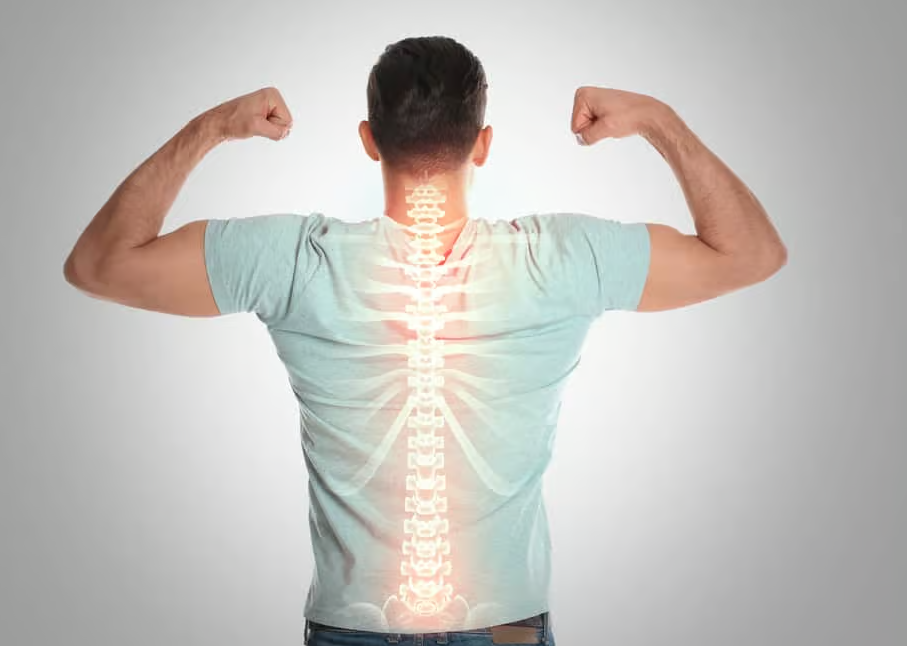

The Connection Between Happiness and Back Pain: How Emotional Well-being Impacts Physical Health
Back pain is a prevalent issue affecting millions globally, and it can significantly impact one’s quality of life. Interestingly, there is a growing body of research indicating a strong connection between emotional well-being, particularly happiness, and the experience of back pain. Understanding this relationship can provide valuable insights into managing and alleviating back pain more effectively. Here’s a look at how happiness and emotional health influence back pain and how improving your emotional state can contribute to better physical health.
1. The Role of Stress and Emotional Well-being
Why It Matters: Stress and negative emotions can lead to muscle tension and exacerbate physical pain, including back pain. The relationship between stress and back pain is well-documented, with high levels of stress often leading to increased discomfort.
How It Affects Back Pain:
• Muscle Tension: Stress can cause muscles to tighten, leading to increased strain on the back and contributing to pain and discomfort.
• Inflammation: Chronic stress may promote inflammation in the body, which can exacerbate back pain and other health issues.
2. The Impact of Happiness on Pain Perception
Why It Matters: Happiness and positive emotions can alter pain perception and reduce the intensity of pain experienced. A positive emotional state has been shown to influence how the brain processes pain signals.
How It Affects Back Pain:
• Endorphin Release: Happiness and positive emotions stimulate the release of endorphins, which are natural painkillers that can help reduce the perception of pain.
• Improved Pain Tolerance: People who report higher levels of happiness often have a higher pain threshold and tolerance, making them less sensitive to pain.
3. Emotional Resilience and Coping Strategies
Why It Matters: Emotional resilience and effective coping strategies play a crucial role in managing back pain. Resilient individuals are better equipped to handle pain and its impact on their lives.
How It Affects Back Pain:
• Adaptive Coping: Positive emotional health promotes the use of adaptive coping strategies, such as problem-solving and seeking social support, which can help manage and mitigate back pain.
• Reduced Anxiety: Managing anxiety and negative emotions can lead to reduced muscle tension and improved overall physical comfort.
4. The Influence of Positive Social Interactions
Why It Matters: Social connections and supportive relationships contribute to emotional well-being and can impact physical health, including back pain.
How It Affects Back Pain:
• Social Support: Strong social support networks can provide emotional comfort and practical help, reducing the impact of back pain and improving overall well-being.
• Joy and Laughter: Engaging in positive social activities and experiencing joy and laughter can reduce stress and contribute to pain relief.
5. Integrating Happiness into Pain Management
Why It Matters: Incorporating strategies to enhance happiness and emotional well-being can complement traditional pain management approaches and improve overall outcomes.
How to Achieve It:
• Practice Mindfulness and Meditation: Mindfulness and meditation techniques can help reduce stress, improve emotional health, and enhance pain management. Practices such as deep breathing and mindfulness-based stress reduction (MBSR) can be particularly effective.
• Engage in Enjoyable Activities: Regularly participate in activities that bring joy and satisfaction. Hobbies, exercise, and social interactions can improve mood and contribute to better pain management.
• Seek Professional Support: Consider working with mental health professionals, such as therapists or counselors, to address emotional issues and develop coping strategies that support both mental and physical health.
6. The Benefits of a Holistic Approach
Why It Matters: A holistic approach to managing back pain considers the interplay between emotional well-being and physical health, offering a more comprehensive strategy for relief.
How to Achieve It:
• Integrate Physical and Emotional Care: Combine physical treatments for back pain, such as physical therapy and exercise, with strategies to improve emotional health, such as stress management and social support.
• Adopt a Positive Mindset: Cultivate a positive outlook and engage in practices that enhance overall happiness. A positive mindset can improve resilience and contribute to better pain management.
Conclusion
The connection between happiness and back pain highlights the importance of addressing both emotional and physical aspects of health for effective pain management. By understanding how emotional well-being influences pain perception and incorporating strategies to enhance happiness, individuals can improve their overall quality of life and alleviate back pain. Integrating practices that promote emotional health, such as mindfulness, social support, and engaging in enjoyable activities, can complement traditional pain management approaches and lead to more comprehensive and lasting relief. Embracing a holistic approach to health and well-being offers the best chance for a pain-free, fulfilling life.








